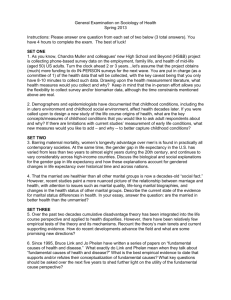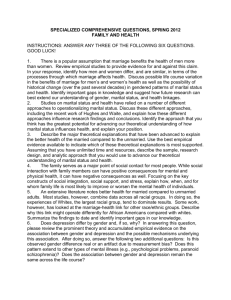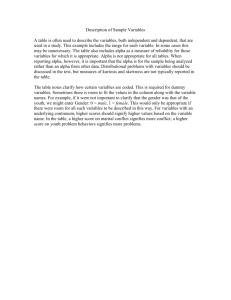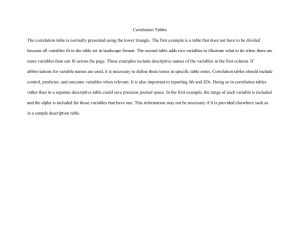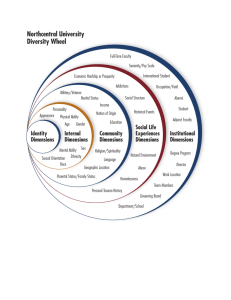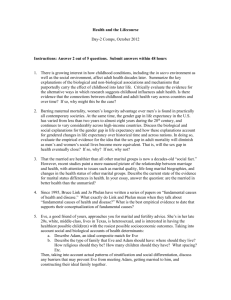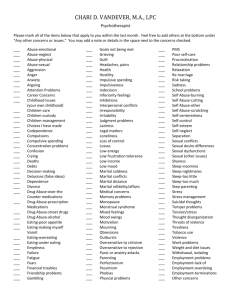Group Therapy
advertisement
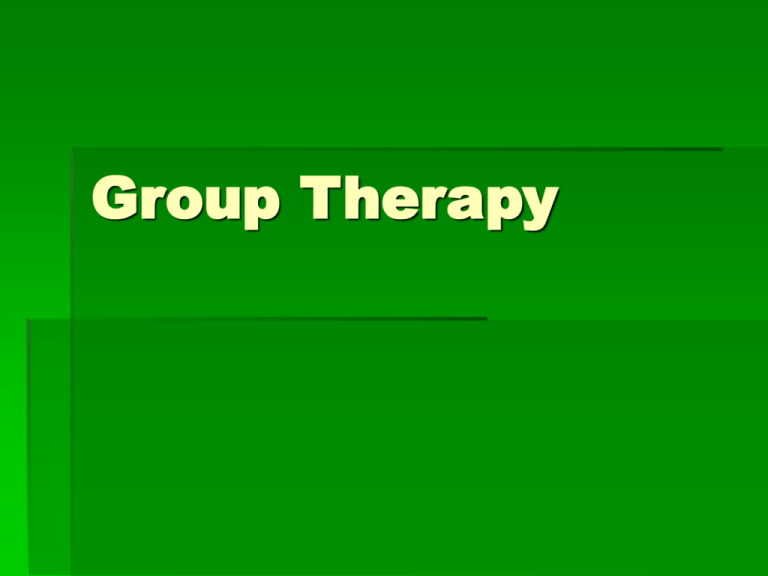
Group Therapy Group Therapy More than simultaneous treatment for several individuals Advantages of group therapy: Economy: group therapy is less expensive Group support: there is comfort in knowing that others have similar problems Feedback: group members learn from each other Behavioral rehearsal: group members can role-play the activities of the key persons in a member’s life Group Therapy First practiced at the beginning of the 20th century by Joseph Pratt in Boston Worked with tuberculosis patients Group Therapy Use stimulated by the shortage of trained therapists after WWII Every major model of clinical psychology offers group therapy also popular with nonprofessional, selfhelp organizations (weightcontrol, AA, NA, etc.) Group Therapy No consensus as to a uniform process of group therapy Most therapists emphasize the importance of interpersonal relationships and assume that personal maladjustment involves difficulties with interpersonal relationships Yalom’s Curative Factors Common to most, if not all, group therapies Sharing new information Instilling hope Universality Altruism Interpersonal learning Recapitulation of the primary family Group cohesiveness The Practice of Group Therapy Groups usually consist of 6-12 members If too small – lack of universality and cohesiveness If too large – mechanical feedback, lack of sensitivity The Practice of Group Therapy Duration May be on-going or time-limited Each session usually lasts longer than sessions in individual therapy – 2 hours is common Homogeneity vs. Heterogeneity Major issue Homogeneous membership – more direct focus on shared problems Heterogeneous groups – easier to form, wider diversity (more like general society) Marital & Family Therapy Marital & Family Therapy Marital and family discord are 2 of the most common problems encountered by clinical psychologists Approximately 50% divorce rate Child abuse, adolescent suicide, runaways, substance abuse, etc. Marital Therapy Often called couples therapy due to societal changes The client is the relationship, not the individuals in that relationship the goal is to save the relationship Marital Therapy MT can be preceded by, followed or accompanied by individual psychotherapy for one or both members, or can stand alone Individual therapy is indicated when one member is suffering from a problem largely unrelated to the relationship Marital Therapy The need for couples therapy usually arises out of the conflicting expectations and needs of the couple Common areas of conflict: sexual satisfaction, personal autonomy, communication, intimacy, money management, fidelity, expression of disagreement/hostility Marital Therapy Common theme among marital therapists – emphasis on problem solving: learning to work together, communication and negotiation Changing not only the way a couple talks to each other, but how they think about their relationship Decreased fault-finding and blaming Increasing mutual responsibility Maintaining a here-and-now focus Expression of preferences, rather than demands Negotiating compromises Family Therapy Similar to couples therapy, but evolved for different reasons A number of therapists noticed that a number of individuals who made significant improvements in individual therapy or institutional treatment often had a relapse when they returned to their families – this led to an emphasis on the family environment and parent-child interactions as causes of maladaptive behavior Family Therapy The basic concepts of FT differ from individual therapy Grounded in systems theory Circular causality – events are inter-related and mutually dependent Ecology – systems can only be understood as integrated patterns, not component parts Subjectivity – there are no objective views of events, only subjective perceptions filtered by the experiences of perceivers in a system Homeostasis – the tendency of a family to act in ways that maintain the family’s equilibrium or status quo Family Therapy The therapeutic focus is on changing interactions between/among family members with the goal of improving the functioning of the family or the functioning of individual members of the family The focus is initially on one family member – the “identified patient” or scapegoat (typically an adolescent, but not always) The therapist reframes the problem in terms of disturbed family processes or faulty family communications Family members are encouraged to see their own contributions to the family’s problems, as well as the positive changes they can make


